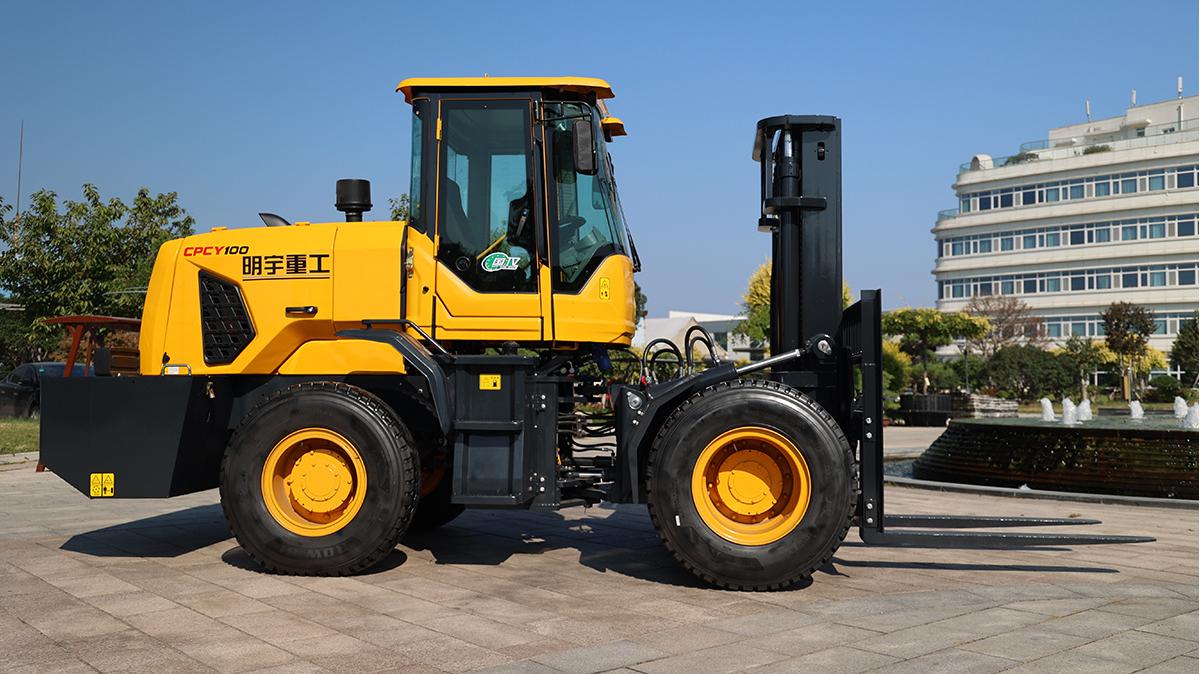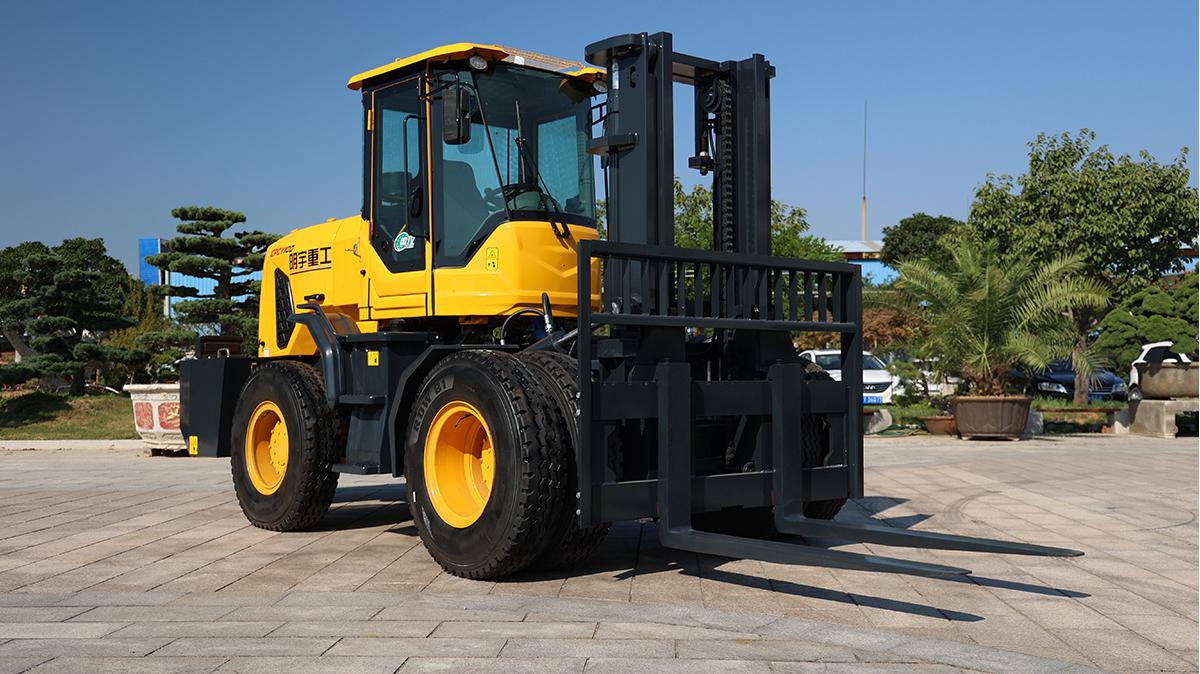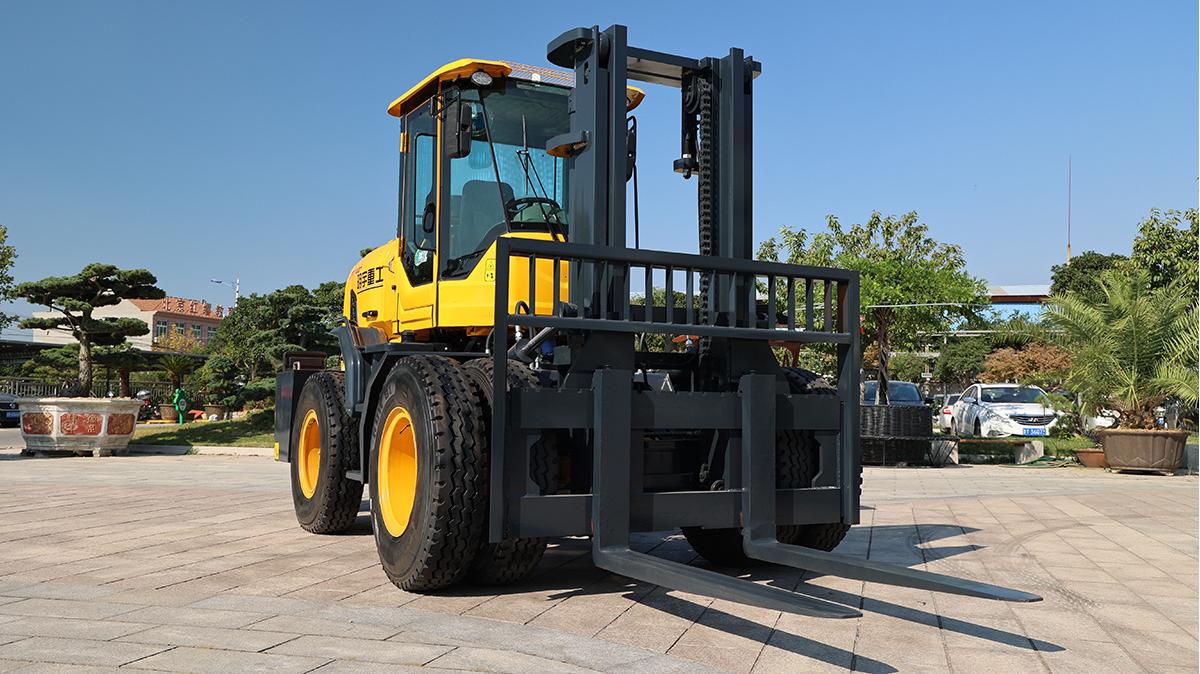What’s the Maximum Slope an Articulated Forklift Can Handle? Safety & Performance Guide
1. Introduction Articulated forklifts are highly maneuverable material-handling machines designed for tight spaces and challenging terrain. Unlike traditional forklifts, their pivoting joint allows for sharper turns and better adaptability in confined work areas. However, one critical question operators and site managers must ask is: What’s the maximum slope an articulated forklift can safely handle? Understanding slope limitations is crucial for safety, efficiency, and equipment longevity. Exceeding recommended incline angles can lead to tipping accidents, load instability, or mechanical strain. While standard forklifts typically handle slopes of 5-10%, articulated models may perform differently due to their unique design. This guide explores: Industry standards for maximum slope operation. Key factors affecting stability (load, tires, ground conditions). Real-world case studies of safe vs. unsafe slope use. Best practices for operators to minimize risks. By the end, you’ll know how to maximize productivity while keeping your worksite safe.
2. Industry Standards for Maximum Slope Handling General OSHA & ISO Guidelines Most forklifts, including articulated models, follow OSHA’s recommendation of a 5-10% maximum slope (approximately 3-6 degrees) when loaded. However, articulated forklifts often have slightly higher thresholds (up to 10-15%) due to their enhanced stability and weight distribution. Manufacturer-Specific Recommendations Different brands provide varying slope limits: Combilift: Up to 10% slope with proper load distribution. Flexi Narrow Aisle: Recommends no more than 5% for loaded operation. Aisle Master: Some models can handle 15% slopes under controlled conditions. Always check the operator’s manual—exceeding these limits risks rollovers, brake failure, or hydraulic leaks.
3. Key Factors Affecting Slope Performance A. Load Capacity & Distribution Heavier loads reduce stability—operate at lower slopes when near max capacity. Uneven loads shift the center of gravity, increasing tip-over risk. B. Tire Type & Traction Pneumatic tires (air-filled) provide better grip on rough or slippery slopes. Cushion tires (solid rubber) are best for smooth surfaces but may slip on inclines. C. Ground Conditions Wet, muddy, or gravel surfaces decrease traction—reduce slope angles accordingly. Uneven terrain can destabilize the forklift even on minor slopes. D. Forklift Design & Articulation The pivoting joint improves maneuverability but can affect balance on inclines. Wheelbase & weight distribution play a role—longer models may handle slopes better. E. Operator Skill & Speed Slow, controlled movements prevent sudden shifts in weight. Avoid sharp turns on slopes—articulated forklifts can become unstable if turned abruptly
4. Real-World Testing & Case Studies Case 1: Warehouse Ramp Accident A logistics company ignored the 10% slope limit for their articulated forklift, leading to a rollover when carrying a 1.5-ton load. Investigation revealed: Worn-out tires reduced traction. The operator turned while ascending, destabilizing the machine. Case 2: Safe Slope Operation in Construction A construction site successfully used an articulated forklift on a 12% slope by: Reducing load capacity by 20%. Using pneumatic tires for better grip. Training operators on slow, straight-line movements. Lesson: Proper preparation and adherence to limits prevent accidents.
5. 5. Safety Best Practices for Slope Operation Pre-Operation Checks Inspect tires for wear and proper inflation. Test brakes before attempting any incline. Secure the load to prevent shifting. Driving Techniques Ascend/descend straight—avoid turning on slopes. Keep the load uphill when going up, forks downhill when descending. Use low gear for better control. When to Avoid Slopes Altogether Icy, wet, or loose surfaces. Visibility issues (fog, dust, poor lighting). Loads near maximum capacity.
6. Alternative Solutions for Steep Slopes If slopes exceed 15%, consider: Rough-terrain forklifts (designed for extreme grades). Telehandlers (better stability on uneven ground). Installing ramps with gentler inclines.
7. Conclusion The maximum slope an articulated forklift can handle typically ranges from 10-15%, depending on load, tires, and conditions. Safety must always come first—exceeding limits risks accidents and equipment damage. Key Takeaways: ✔ Consult the manual for manufacturer-specific limits. ✔ Reduce speed & load capacity on slopes. ✔ Train operators on proper incline techniques. By following these guidelines, you can maximize efficiency while keeping your worksite safe.
Post time:Aug.04.2025



